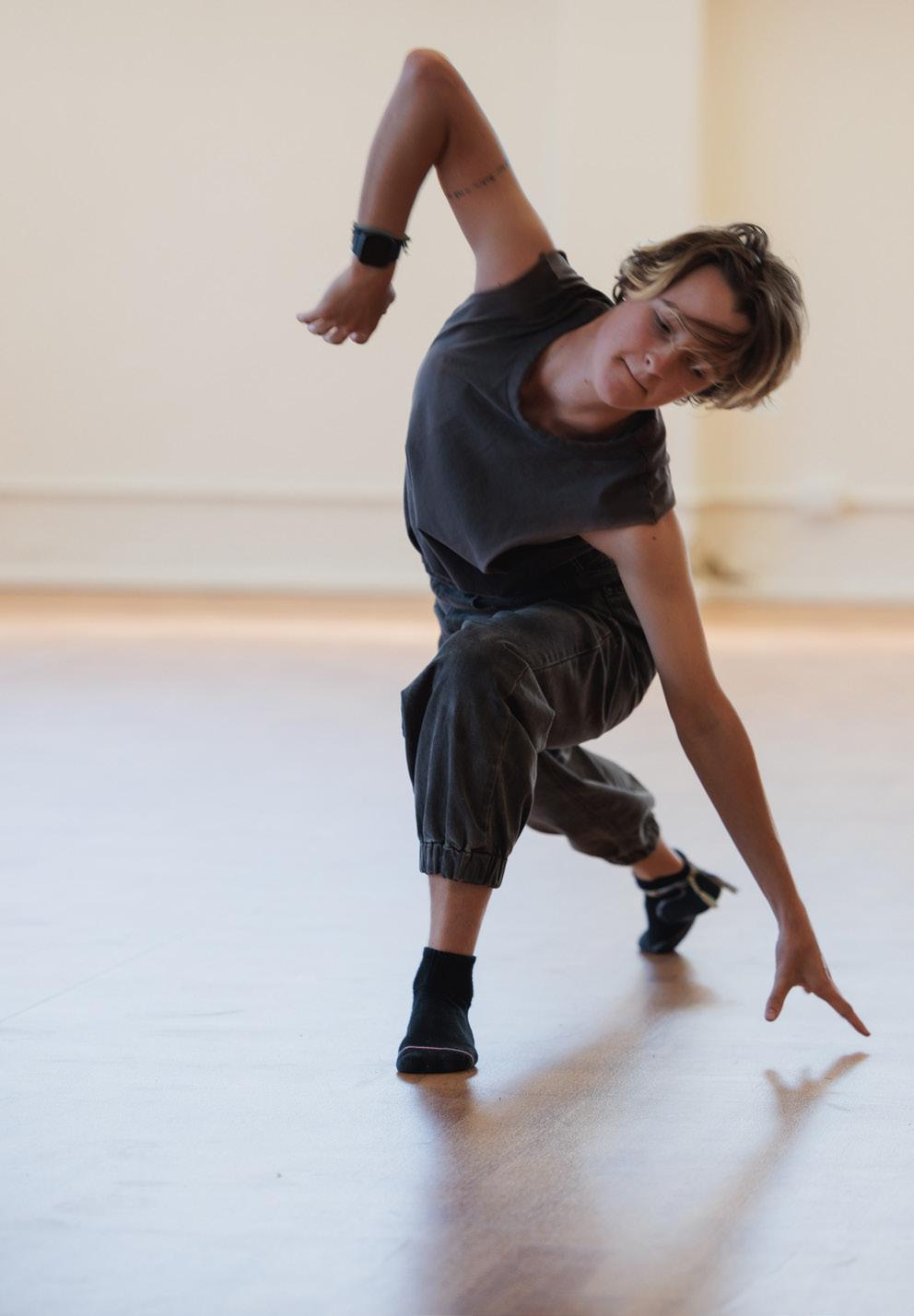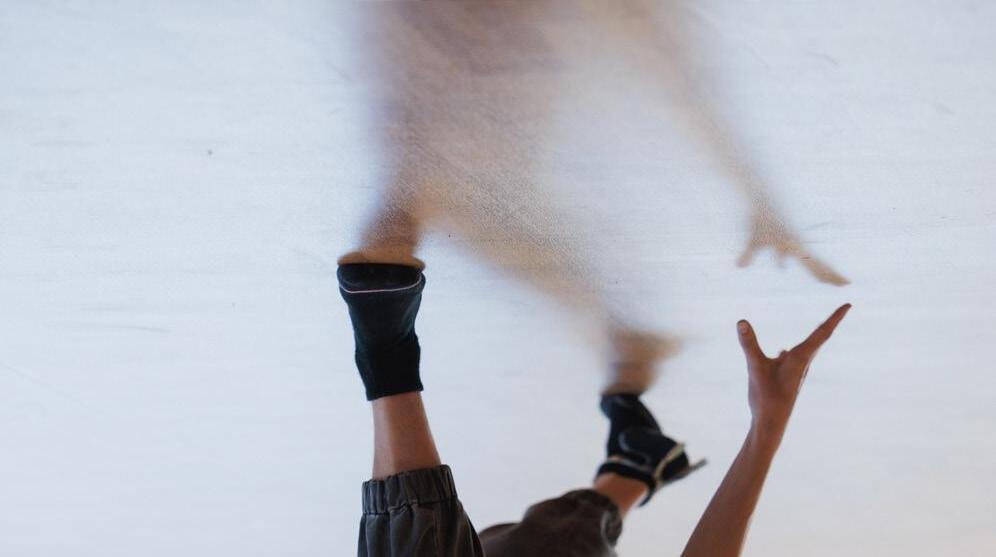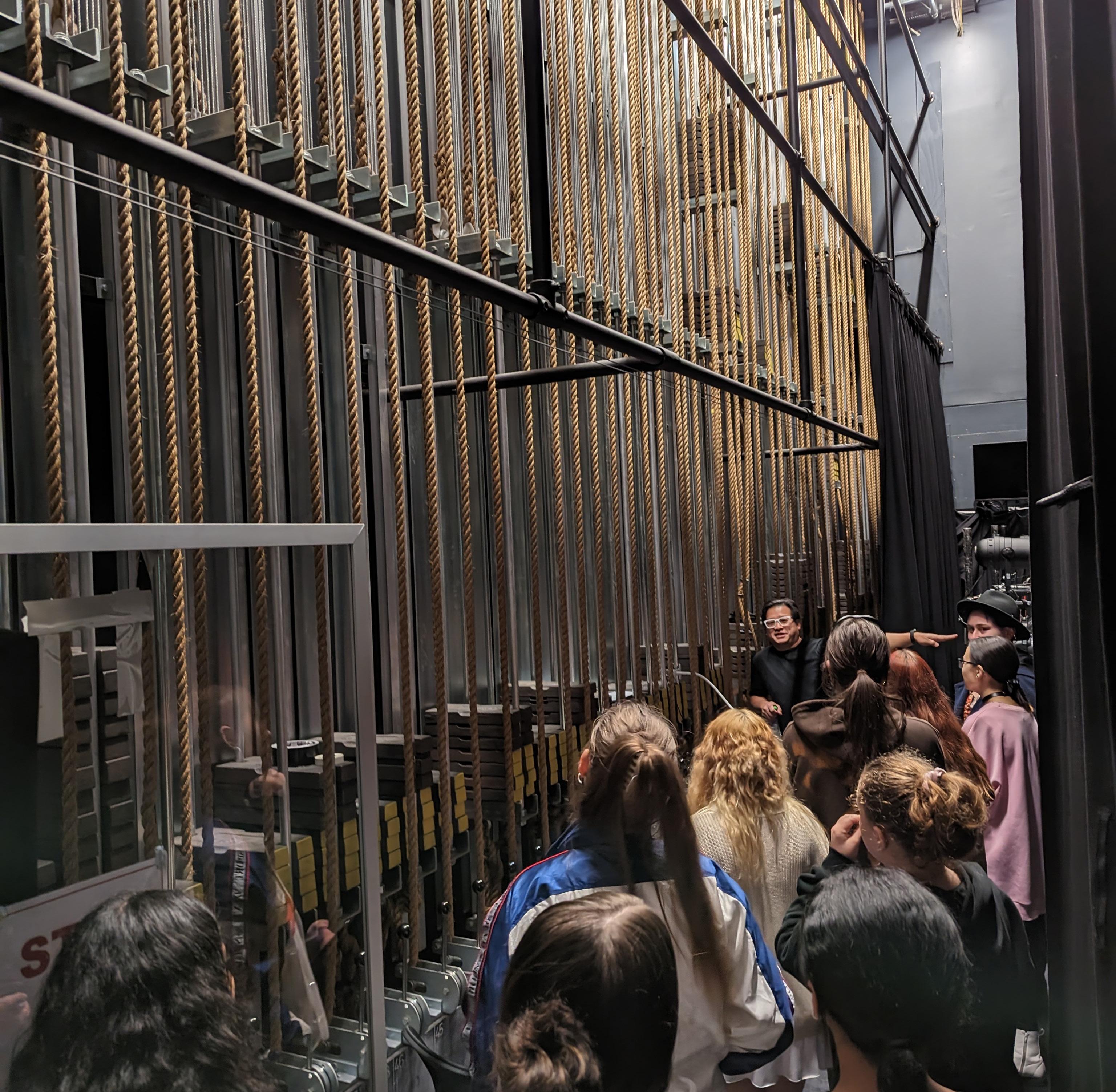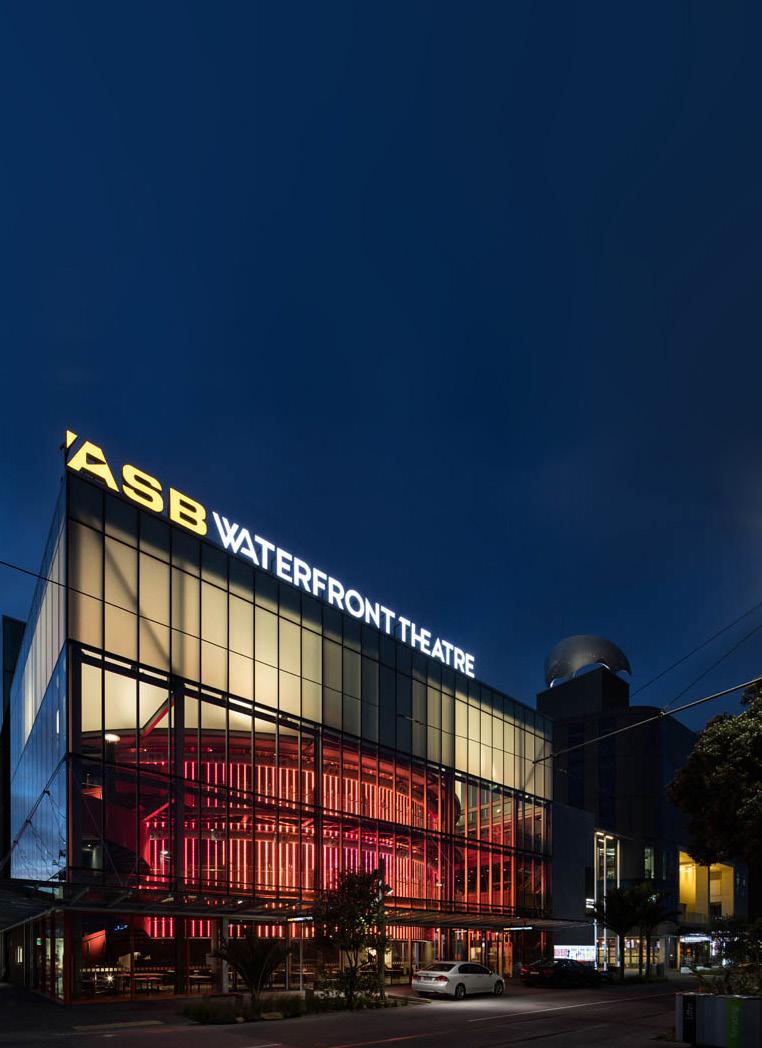

Creative Learning

Pre-show Pack 2024
On behalf of the artists and everyone behind the scenes, Auckland Theatre Company welcomes kaiako and ākonga to Auckland Theatre Company in 2024.
Our Creative Learning programme runs workshops for ākonga, school matinee performances, and curriculum-linked resources.
This pre-show pack helps you prepare to see live performances as part of the NCEA Drama Curriculum. This resource will help you to get the most out of your visit to the theatre, priming you to see beyond the performance and consider the connections to your drama curriculum.
Once you’ve seen the production, download the full Education Pack for further insights to the production.
PRE-SHOW PACK ACTIVITIES WRITTEN BY ANNA
RICHARDSONKia Ora and Welcome to Auckland Theatre Company
ABOUT AUCKLAND THEATRE COMPANY
Auckland Theatre Company was founded in 1992, out of the ashes of the Mercury Theatre, and produced its first season in 1993.

Auckland Theatre Company introduced itself to the world under the leadership of Simon Prast with the world premiere of David Geary’s Lovelock’s Dream Run, directed by Raymond Hawthorne ONZM at the Watershed Theatre. During Simon’s tenure, the company established itself as a successful artistic force, performing at venues across the city. The company was led by Artistic Director Colin McColl ONZM from mid-2003 to 2021. He created an unprecedented 18 seasons during a highly productive period in which Auckland Theatre Company established a permanent base at Balmoral, and set the scene for a theatre to call home.
In 2016, after a decade of dreaming, planning and fundraising, Auckland Theatre Company opened its own theatre, the ASB Waterfront Theatre in Wynyard Quarter, creating a new platform where theatre-makers could work at scale. Across its history, Auckland Theatre Company has nurtured new writing by New Zealand playwrights, investing in commissions and world premieres every year. This commitment to New Zealand theatre vernacular remains the backbone of the company’s artistic work.

Our purpose of ‘Powerful storytelling that connects communities and enriches lives’ is manifested in five programme strands. We:
• Produce theatre of scale and ambition, presenting outstanding New Zealand and international work that thrills audiences and builds community.
• Develop new work by New Zealand theatre artists, reflecting the community of which we are a part and nurturing the next generation of New Zealand storytellers.
• Inspire and engage young people, through initiatives in which young people can participate through school and independently.
• Provide leadership for the performing arts sector, offering professional development and resources that nurture theatre workers.
• Programme ASB Waterfront Theatre to fulfil its potential as a cultural asset for the benefit of Aucklanders.
We strive to reach the widest possible audience with our produced mainstage work, visiting company’s work and our numerous workshops and community programmes around Tāmaki Makāurau.
This is your city’s theatre company. Nau mai, haere mai. Everyone is welcome.
Preparing to view live theatre
Your kaiako have organised for you to see a production at Auckland Theatre Company as part of your drama programme this year. In Drama there are important reasons why viewing live theatre is essential to your learning:
• The opportunity to see actors in a professional, semi-professional or amateur theatrical context.
• The ihi, wehi and wana that you, the actors, and the audience that surrounds you in the theatre, feel as you watch the performance.
• The opportunity to have an emotional, physical and theoretical response to a performance.
• To respond to the director, designer and actor’s intentions that are put forth during the performance.
• To be inspired by the work you see and use the dramatic components in your own work back in the classroom.
Before you head to the theatre you might want to do all or a selection of the following activities to ensure that you are getting the most out of the performance, both personally and as a part of your NCEA assessment programme.
Before you begin preparing to visit the theatre you will want to set up a space to collate your work; to store your notes from your teacher, reflections, sketches, brainstorms, audio recordings, practice exam answers and digital education packs. This could be:
• A digital space such as a Onenote, Google Site or Google Folder.
• A written journal or portfolio
• A designated space in a binder or clearfile
• A combination of all of above

Activity One: A personal understanding of the learning
With the refresh of NCEA, all teaching and learning in Drama across all three levels of NCEA will draw from these Big Ideas:
Titiro whakamuri, kōkiri whakamua – Drama is influenced by whakapapa and is a way to respond to and share identity, culture, and perspectives
Mā whero, mā pango, ka oti ai te mahi – Drama is a collaborative, creative process
Poipoia te kākano kia puawai – Drama communicates through storytelling and creative expression to nurture and nourish people
Te whāriki kia mōhio ai tātou ki a tātou – Meaning in performance is created through whanaungatanga
Activity:
In small groups or as a class, discuss how these Big Ideas relate to viewing live theatre as a member of the audience?
• What learning are we doing in this context?
• Why is it important?
• How does what we experience at the theatre link to other work we might be doing in class?
THEN
Continuing to brainstorm in smaller groups or as a whole class using the Big Ideas, the bullet points on why viewing theatre is essential and the following ideas to guide your conversation. -
“Why is it important to see live theatre?”
“What skills do I need to develop to ensure I am going to get the most out of this theatre viewing experience?”
“Using the information provided - what is the play about? What do you know about the play already? Are there personal connections you can make with the topic/story?”
“What are you excited about?”
• Make sure someone is a scribe for this activity. They could collate everyone’s ideas on the white board or on big pieces of paper in groups.
• Ensure everyone gets a copy of the outcome of the brainstorm.
• Store this in your digital or written portfolio to return to.
Activity Physical,Two:emotional and theoretical response
We view theatre for entertainment, for enjoyment but also to be challenged and to think deeply. You will need to remember your response and unpack your thinking later in the year when you:
Level One: develop your report in class to submit for external assessment.
Level Two and Three: Sit your mock exams and your external exams.
Brainstorm what you might need to do when you visit the theatre to record your physical, emotional and theoretical response to the performance. How will you set yourself up for success? What can your kaiako do to support you prior to the trip?
Note: Remember that enjoyment of the show is important and that you are going to be provided with a full education pack from Auckland Theatre Company. Some examples of what you could do are;
• If the set is visible when you enter the theatre, you might choose to sketch the set in a notebook prior to the show and then tuck that notebook away until the post show forum.
• Noting down an immediate response at the end of the show in a few words or sketches might capture what you are feeling in that moment.
• Voice recording the post show forum on your phone.
Activity Three: Pacific Performance Traditions
Red, White and Brass was ‘inspired by an amazing ’straight-up’ true story and with bucketloads of Tongan māfana (warmth)”. It tells a story of friendship, family and fearlessly standing up for what you believe in.” This show has been adapted from the acclaimed film of the same name that premiered last year. This work, while unique, pulls from pacific theatre traditions, using some of the same dramatic features that has enabled pacific artists to carve out space for their voice.
In order to unpack this performance back in the classroom you will need to look out for pacific performance traditions and features woven through the work and new elements that make this play unique.
The following ideas could be titles to brainstorm around or to look out for examples throughout the performance. These will be unpacked in more depth in the full education pack:
• Family traditions and preservation of traditional values
• Social differences in language use and style
• Developing national identity, cultural identity and individual identity
• The use of song and dance
• Changing social perspectives
• Place and time reflects a moment in history
• Pacific performance traditions interwoven or highlighted by theatre trends in the western world
• Realism and how it has been manipulated or heightened to communicate a message
• Exploring tragedy through comedy and satire
Prior to seeing the performance you may want to discuss the bullet points above with your Kaiako and ask them for examples from other performances or plays. You might even be studying an example of pacific theatre as part of your curriculum work this year with which you can draw parallels.
Pacific Values Framework in Red, White and Brass
The Pacific Values Framework is drawn from the refresh of NCEA Level One. It is designed to be “inclusive and relevant to Pacific learners and contexts” and aims to “incorporate Pacific knowledges, languages, cultures, and identities as inherently valuable to the teaching and learning of respective subjects.”
The five values are Alofa, Kuleana, Vaka, Vā and Fonua. For this activity your teacher will need to go through each of the values with you, using the information via this link: Pacific Values Framework –Delivering for Pacific Learners and Contexts | NCEA
Prior to the performance, brainstorm how these values appear in a performance context.
• What do you need to look out for in the performance?
• What questions do you have?
• What questions could you ask in the forum that might provoke interesting answers and support your understanding of the wider context of the performance?
• What have the values made you think about? For example; Vaka and the appropriation of culture by the west? What is lost or gained in the process of making performing art this way?
Activity Four: Level One ākonga only
Kaiako and ākonga will need to note that the mode of assessment for the new NCEA Level One Live Performance Standard has changed.
Keep your External Assessment Specifications in mind as you view live theatre: 91942-spc-2024.pdf (nzqa. govt.nz)
As a drama student you will need to notice, think about and unpack the following:
• Taking note of the themes, ideas, symbols
• Noticing when the performance is linked to a wider context - historical, geographical, social and political
• Whether the performance uses a specific theatre form
• Actors use of techniques; body, voice, movement and space
• The choices that the design team has made and the impact they have on the performance and on you as a member of the audience
• The intention the Director(s) intended to communicate to the audience through their choices
• The wairua of performance and your personal response to the performance.
You will have approximately six hours (over a number of periods) during the year to compile a report drawn from the learning that you do after seeing Red, White and Brass. The report will be based around the following task:
TASK
Respond to a drama performance by addressing the following questions.
(a) How and why did the key message(s) of the drama performance have an effect on the audience? Why was this important?
(b) How and why were a range of drama components used to create effect in the performance? Note: Drama components include techniques, elements, conventions, and technologies.
(c) How and why did the wairua of the performance have an impact on you? You should consider:
• the relationship between performers and audience
• the intended effect of the performance on the audience
• your personal response to the performance.
In small groups discuss the task and what aspects of the performance you will need to look out.
Using the information provided by Auckland Theatre Company, about the play, discuss what you think you might personally connect to and what you might be challenged by.
Activity Four: Level Two and Three ākonga only
Keep your Exam Specifications in mind as you view live theatre.
As a drama student you will need to notice, think about and unpack the following:
• Taking note of the themes, ideas, symbols
• Noticing when the performance is linked to a wider context - historical, geographical, social and political
• Whether the performance uses a specific theatre form
• Actors use of techniques; body, voice, movement and space
• The choices that the design team has made and the impact they have on the performance and on you as a member of the audience
• The intention the Director(s) intended to communicate to the audience through their choices.
YEAR LEVEL FOCUS:
Below are specific aspects that you will need to keep in mind as you view theatre and then prepare for the external assessment in November. These pointers have been drawn from the NZQA website. (Questions that help you unpack these in detail will be provided in the Education Pack following the show.)
Year 12/Level Two NCEA:
• Drama elements, techniques, conventions, and technologies.
• For full specifications, reference this document: 91215-spc-2024.pdf (nzqa.govt.nz)
Year 13/Level Three NCEA:
• Connections between director/designer’s concept(s) and the performance
• Elements, Techniques, Technologies, Conventions
• Wider context
• For full specifications, reference this document: 91514-spc-2024.pdf (nzqa.govt.nz)
In small groups discuss what aspects of the performance you will need to look out for using the focus points for your year level.
Using the information provided by Auckland Theatre Company, about the play, discuss what you think the “wider context” of the performance might be.
Activity PreparingFive:for a post-show forum
After the performance you will get the opportunity to listen to and ask questions of the cast, crew and creative team. This is an amazing opportunity to enrich your understanding of the performance BUT it is usually only fifteen to twenty minutes long, so it is important to think about the type of questions which will help you, students from your school and students from other schools attending.
If the performers and creative team are ok with it, recording the forum on your phone or device via voice notes is really helpful. Your kaiako might choose to do this for you and share it with you back in class.
As a class or in small groups discuss the following:
What type of questions help deepen my understanding?
How should I word my questions, so that I am not using exam jargon or language?
Who am I directing my questions to? Actor, designer, director?
What questions would be fun to ask but might not be helpful during a short forum?
What questions do I save for my kaiako/teacher?
REFERENCES:
NCEA: Drama | NCEA (education.govt.nz)
NCEA Drama Matrix: DR Learning Matrix.pdf (ncea-live-3-storagestack-53qassetstorages3bucket-2o21xte0r81u.s3.amazonaws.com)
NZQA: Drama :: NZQA
About ASB Waterfront Theatre
ASB WATERFRONT THEATRE
Located in the heart of Wynyard Quarter, ASB Waterfront Theatre is a thriving hub of arts and culture and the home of Auckland Theatre Company. Built for the people of Auckland and beyond, the theatre showcases the very best of Aotearoa’s theatre, dance and film.
After seven years of fundraising, in 2016 the doors of ASB Waterfront Theatre opened with Billy Elliot the Musical. The building features a 675-seat theatre, The Lounge, bar and hosting gallery. Auckland Theatre Company’s season plays for up to 24 weeks of the year; this is complemented by national and international dance, film and theatre.
For information on how to find the theatre, or access information, please click here.
For information on school group visits, including our RAMS forms, please contact Sam Phillips, ATC’s Head of Learning & Participation on sam@atc.co.nz.

TE POU WHAKAMAUMĀHARATANGA MO MĀUI TIKITIKI A TĀRANGA
New Zealand sculptor Professor Robert (Bob) Jahnke created a pou for the theatre’s Logan Campbell Yard, Pou Whakamaumāharatanga mo Māui Tikitiki a Tāranga, which stands 6.4m tall.
In Aotearoa, Māui is the iconic Māori figure to celebrate the art of theatre. The tōtara and corten steel pou depicts a range of Māui stories. The three figures crowning the pou represent Māui slowing the sun, Māui securing fire from Mahuika, the goddess of fire, and Māui fishing up the North Island.
The rest of the pou includes references to Irawaru whom Māui transformed into a dog and Tunaroa, the eel slain by Māui.
On the base of the rear of the pou is a lizard which refers to the final action of Māui, his encounter with Hine nui te po, the goddess of the underworld.
The patterns on the pou are based on the North Auckland kirikiore pattern which could be found on canoe figureheads and treasure boxes.
The pou is made from corten steel and laminated tōtara , and serves as a focal point for powhiri and other ceremonial events at the main entrance to the new theatre.
Jahnke (Ngai Taharora, Te Whanau a Iritekura, Te Whanau a Rakairo o Ngati Porou) is an artist whose practice over the years has straddled design, illustration, animation, painting and neon installation. Of Samoan-German-Irish-Māori heritage, his work is typically based on political issues that face Māori people, the relationship between Māori and European colonisers and the impact of Christianity on Māori culture.
Jahnke is considered one of New Zealand's leading contemporary artists.
Pouwhakamaumāharatanga mō Māui Tikitiki a Tāranga
The Memorial Post of Māui the Topknot of Taranga
Robert Jahnke ONZM (Ngāi Taharoa, Te Whānau a Iritekura, Te Whānau a Rākairo o Ngāti Porou) 2016
Proudly commissioned by Auckland Theatre Company for ASB Waterfront Theatre

LIGHT MATRIX (AUCKLAND THEATRE COMPANY) 2016
Renowned American artist Leo Villareal created a LED light installation for the interior of the ASB Waterfront Theatre, facing onto Halsey Street.
This is Villareal's first major public commission in the Pacific. Villareal is regarded as one of the most prominent light sculptors of his generation.
This installation is made up of 8,260 LEDs, spans 29 metres and runs across three floors of the building. Villareal spent time at the theatre programming at night his algorithms that generate the LED sequences.
Villareal describes it as a sculpture to be explored. The public is welcome to come inside, take time with the artwork when the theatre is open. With the glazed façade the artwork is also viewable when the theatre is closed.
For Villareal the ability of an artwork to connect people and draw them together is a vital part of public art. He enjoys museums and art galleries but says, dragging art out and making it part of people’s everyday lives is really important.

